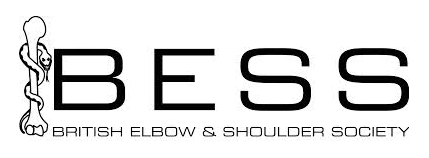7 Tips to Prevent a Gym Shoulder Injury: A Guide to Shoulder Health and Fitness
Have you recently joined a gym to start an exercise program? Or are you already an avid gym-goer looking to get to the next level of fitness? For either option, your first priority should be to avoid a gym shoulder injury.
January is the season brimming with good intentions, Dry January, Vejanuary, and a renewed commitment to shed a few excess kilos. It’s also the time when gym memberships surge as we turn off the TV, leave the comfort of our sofa, put on a pair of trainers, and brave the cold to hit the gym. While many are driven by the vision of achieving a six-pack, few consider the risks of getting a gym-related injury that come with improper training. As a shoulder surgeon, I see numerous gym-related shoulder injuries that could have been avoided. So, how do you enhance your shoulder strength and mobility while minimising the risk of injury?
In this article, I will delve into the causes of gym-related shoulder injuries, techniques to prevent shoulder pain from weightlifting, and the measures to take if you develop shoulder pain caused by gym issues. By making shoulder health a priority and adhering to correct techniques, you can safeguard yourself against unnecessary setbacks and keep on track with your fitness objectives.
The shoulder joint is a complex and versatile part of the body, essential for stability and mobility in a variety of exercises and sports activities. As the most mobile joint in the body, the shoulder is particularly susceptible to gym shoulder injuries. In this comprehensive guide, I will investigate the causes of shoulder joint pain, strategies to prevent injury, and the steps to follow if you are faced with shoulder pain.
Understanding a Gym Shoulder Injury
What Causes Gym Shoulder Injuries?
Gym-related shoulder injuries can occur due to a combination of factors, such as:
- Excessive loading
- Repetitive loading
- Poor technique
- Use of performance-enhancing substances.
Overloading the shoulder joint beyond what it can structurally handle may result in tendon ruptures or dislocations. Repetitive stress without sufficient recovery can lead to inflammation and tendinopathy. Incorrect weightlifting techniques can impose extra strain on the shoulder, causing shoulder pain when lifting weights. It’s advisable to steer clear of performance-enhancing substances that could weaken tendons and heighten the risk of injury.
Common Shoulder Injuries from Gym Activities
Several shoulder injuries are commonly associated with gym activities, these include
– Rotator cuff muscle injuries
– Pectoralis major tendon ruptures
– Injuries to the long head of the biceps muscle
– Shoulder dislocations or subluxations causing a torn labrum
Rotator cuff injuries are particularly common among gym enthusiasts due to the repetitive overhead movements in exercises like upright rows, lifting weights above the head, bench dips, and behind-the-head neck pull-downs. Being aware of these shoulder injuries from lifting can enable you to take proactive steps to protect your shoulders during your workout regimen.
Techniques to Avoid Gym Shoulder Injuries
Maintaining Good Posture
Proper posture is essential for shoulder stabilisation, both inside and outside the gym. Extended periods of poor posture, such as sitting at a desk and staring at a computer screen, can lead to shoulder stress. In this position, your head and neck are pulled forward and downward, causing your shoulders to slump and round forward. The shoulder blades tilt forward, and the deep rotator cuff muscles are not optimally positioned for function, leading to decreased subacromial space and more vulnerable to impingement. To counteract this, it’s important to maintain good posture throughout the day, taking regular breaks to stand and walk around for a few minutes. Stretching your arms upwards will stretch your back muscles, while clasping your hands behind your back and lifting your arms will stretch your chest muscles. Squeezing your shoulder blades downwards and together (scapular retraction) and holding this position will strengthen the muscles that support proper posture.
Improving Shoulder Strength
To safeguard against shoulder pain from working out and reduce the risk of shoulder pain when lifting weights, it’s crucial to strengthen the muscles encircling the shoulder joint.
Enhancing shoulder stability with specific exercises can diminish the likelihood of injuries during intense gym sessions. Integrate seated rows, resistance band exercises, dumbbell workouts, and lat pull-downs into your fitness regimen to target and bolster shoulder strength and stability. A personal trainer or strength and conditioning coach can help you devise a tailored plan that supports your fitness aspirations.
Start Right
Monitoring the position of your shoulder blades before initiating any exercise is vital to prevent shoulder pain after a workout. Injuries often stem from loading the shoulder in a drooped and forward-tilted posture, which heightens the risk of harm. High-intensity programs like CrossFit and F-45, which emphasise speed and repetition until exhaustion, can lead to muscle fatigue, making maintaining proper form throughout the session challenging. If you take part in these activities, be extra vigilant about the position of your shoulders.
Emphasising Proper Body Mechanics
Understanding proper body mechanics is key to avoiding shoulder pain and preventing shoulder injury from weightlifting. Since different parts of the body are interconnected, it’s important to be mindful of the alignment of your feet, legs, pelvis, and spine. Mastering correct movement patterns from the onset of your fitness journey is essential to prevent undue stress on the shoulder joint. Coordinated efforts between various joint functions are necessary for exercises that involve the shoulder, such as a forward lunge with an overhead dumbbell lift, which requires multi-plane shoulder rotations.
Enlisting the expertise of a coach or trainer knowledgeable in body mechanics and shoulder physiotherapy is crucial for learning proper form and preventing shoulder injuries.
Careful lifting technique
Having a proper lifting technique can literally mean make or break for your shoulder.
A frequent shoulder injury from weightlifting occurs when lying on a bench with arms out to the sides at shoulder height and rotating the forearms backward while holding dumbbells. If the dumbbells are too heavy or the technique is flawed, there’s a risk of the weight slipping and causing a tear in the labrum or rotator cuff.
Another common source of gym-related shoulder injury is performing a lying bench press with a bar. If the bar is lowered to the chest with excessive weight, this causes the humeral head to drive forward in the joint and potentially tear the labrum.
Getting a good personal trainer to assess your technique is worth the investment if it prevents an injury.
Prioritising Stretching
Beyond strength training, incorporating stretching into your routine is beneficial for preventing shoulder injuries. While strength exercises enhance stability, stretching fosters flexibility and a broader range of motion. I often suggest a weekly Pilates session to most of my patients to improve posture and mobility. Pilates can be highly rewarding, and if you have never tried it before, I recommend a one-on-one session with a qualified trainer to master the correct technique. For additional stretching exercises tailored to your sport or fitness goals, such as those for a rotator cuff tear or shoulder dislocation, consulting with a strength and conditioning coach is advisable.
Rest and Rehabilitation
Rest and rehabilitation are crucial for preventing injuries and aiding recovery, particularly when it comes to shoulder pain after lifting. Resting your shoulders between workouts is vital, especially if you’re frequently involved in overhead shoulder movements during activities like baseball, softball, swimming, or tennis. Adequate rest is necessary for your body to repair any micro-tears and recover from the strain of repetitive motions. If you experience shoulder discomfort, applying ice can help reduce inflammation, and over-the-counter pain medications can alleviate swelling and discomfort.
What to Do If You Experience Shoulder Pain
Listening to Your Body
It’s important to pay attention to your body to avoid hurting your shoulder whilst working out. If you experience shoulder discomfort, listen to your body and take a break. Reflect on your recent activities to determine which movements may have triggered your pain. Symptoms such as pain during overhead activities, stiffness, and difficulty sleeping at night due to shoulder pain are warning signs that should not be overlooked. Continuing to push through the pain might lead to further risk of serious injury, necessitating longer recovery times. Be aware of your body’s limitations and address any pain or discomfort without delay.
Seeking Professional Help – Treatment of Shoulder Injuries
Persistent shoulder pain or an injury that disrupts your daily activities requires professional attention. If you’re struggling with shoulder pain, book an appointment with me for a thorough examination and to organise imaging to diagnose the issue. We can then create a tailored treatment plan to expedite your recovery. Many patients delay seeking advice, often due to busy schedules, hopes of self-resolution, or fears of surgery. Most shoulder conditions can be treated without surgery. Physical therapy and possibly corticosteroid injections is often enough to restore function. A personalised treatment plan is key to recovering from your injury and regaining full shoulder function.
Conclusion
Maintaining shoulder health is vital for overall fitness and avoiding gym-related injuries, such as shoulder pain when working out or shoulder instability. Understanding the causes of shoulder injuries, using correct techniques, and seeking professional help when you’re suffering from shoulder problems are all part of protecting your shoulders and enhancing your gym performance. Remember to maintain good posture, prioritise stretching, strengthen your shoulder muscles, focus on proper body mechanics, and allow ample time for rest. Adhering to these guidelines will ensure a safe, injury-free fitness journey and help you achieve your goals. Stay dedicated to shoulder health for more productive gym sessions and to support your upper body strength, paving the way for reaching new fitness milestones.
Ms Susan Alexander is a Consultant Orthopaedic Surgeon and President of the Independent Doctors Federation.
She specialises in all shoulder conditions, including frozen shoulder, rotator cuff tears, dislocations and arthritis. Based in London, she practises at Fortius Clinic and King Edward VII’s Hospital. Ms Alexander is highly experienced in minimally invasive (keyhole) shoulder surgery and is known for her meticulous, patient-centred and holistic approach.
She focuses on accurate diagnosis, bespoke treatment planning, and ongoing support throughout recovery. Learn more about Ms Susan Alexander here.












